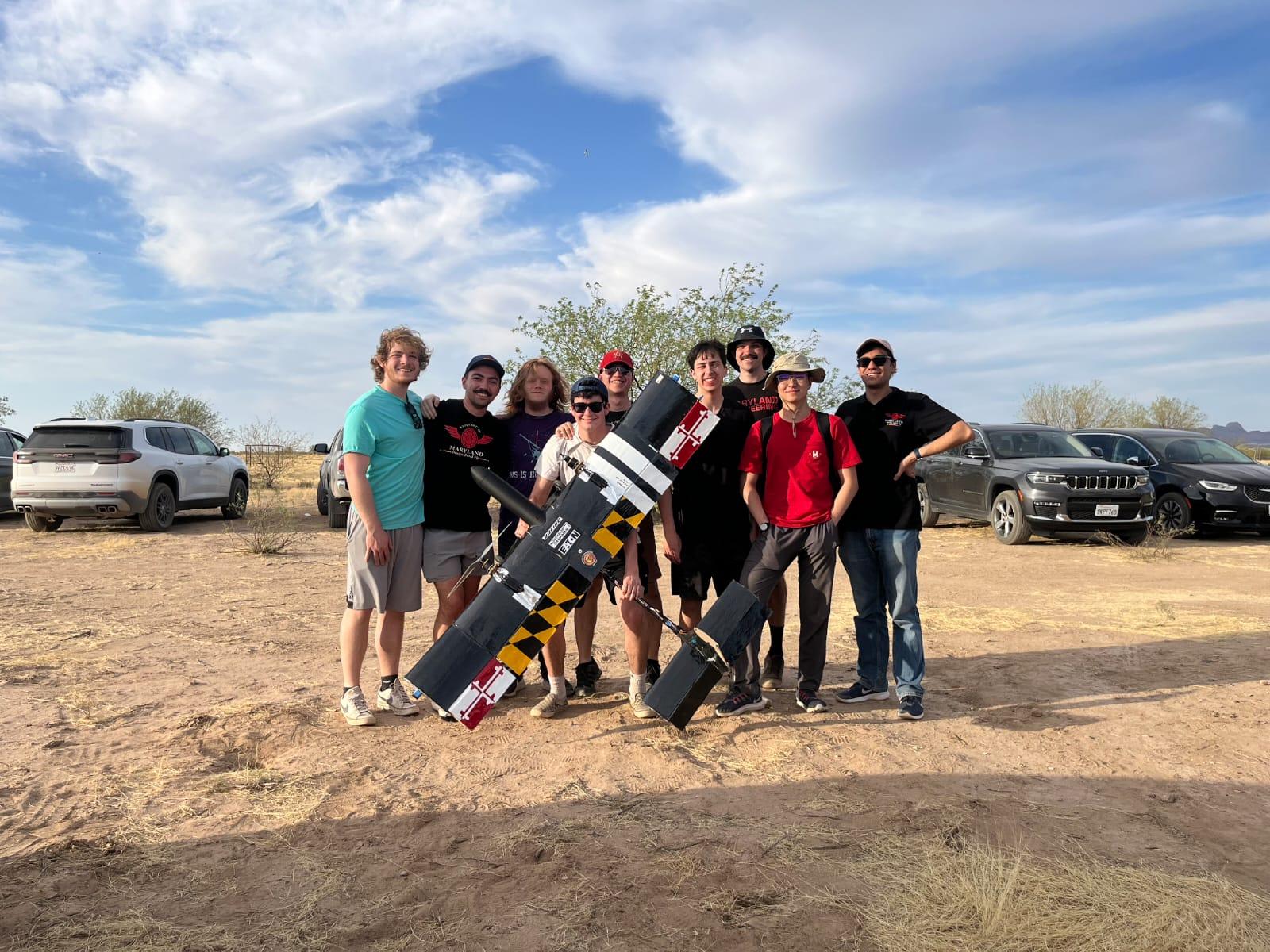Project Description:
Official American Institute of Aeronautics and Astronautics (AIAA) Description:
With DBF student teams across different universities will design, fabricate, and demonstrate the flight capabilities of an unmanned, electric powered, radio-controlled aircraft which can best meet the specified mission profile. The goal is a balanced design possessing good demonstrated flight handling qualities and practical and affordable manufacturing requirements while providing a high vehicle performance.
To encourage innovation and maintain a fresh design challenge for each new year’s participants, the design requirements and performance objective will be updated for each new contest year. The changes will provide new design requirements and opportunities, while allowing for application of technology developed by the teams from prior years.
In consideration of the changing yearly competition requirements, the University of Maryland DBF team was responsible for succeeding in three different mission profiles. These mission profiles were directly influenced by design choices and the corresponding engineering decisions made by the team. While the first mission served as a free flight and demonstration, the second mission presented a greater challenge, requiring the team to carry two external fuel tanks as payload along with a detachable X-1 glider. Mission 3 required teams to perform a drop of the X-1 glider in flight and make a successful landing within a designated area. In the evaluation of the complexity of the project, the team utilized engineering decisions across various principles from systems engineering to aero-structural engineering. In addition to engineering skills, project management, and resource optimization were other key areas for a successful design process.
